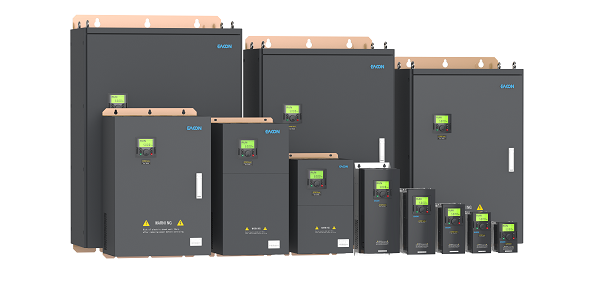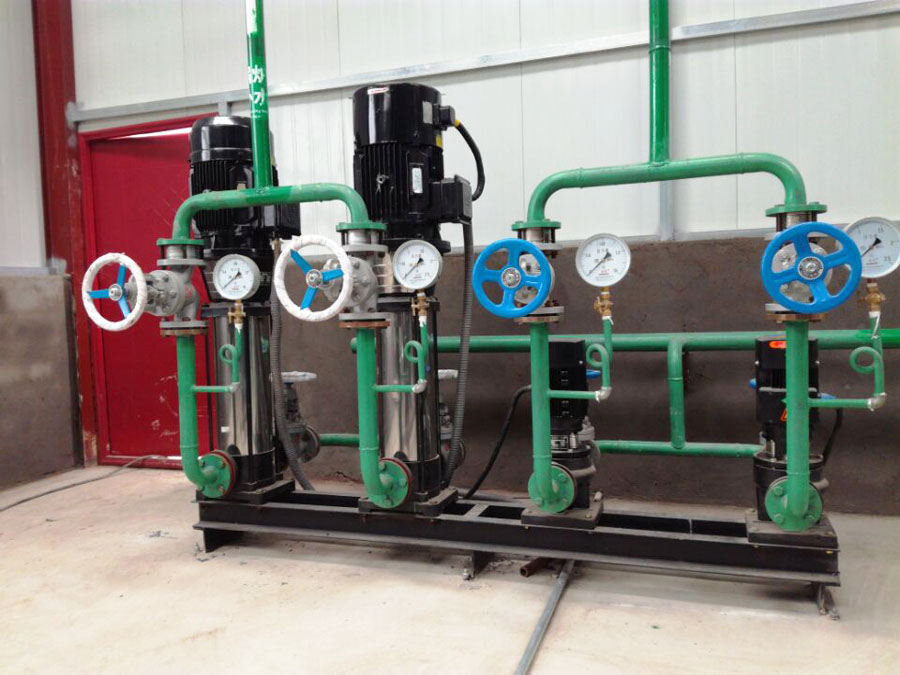In thermal production, the regulation of water supply volume, water supply pressure, furnace required air volume, air pressure, etc. Controlled by frequency conversion. Compared with traditional methods, it has obvious energy-saving effects.
1、 Introduction
In Fushun Industrial Development Zone, two 20t/h steam boilers have been installed for the heating unit. Each boiler has a 90kW induced draft fan, a 55kW forced draft fan, and a 45kW boiler water pump motor. Users are mainly production enterprises, which operate all year round, but the load is unstable, the boiler starts and stops frequently, and in most cases, it is in a low load operation state. Therefore, production costs are high and economic benefits are poor, especially under low load conditions, where there is a serious waste of electrical energy. Therefore, it is proposed to carry out technical transformation on the boiler induced air system and water supply system. By adopting frequency conversion speed regulation, good energy-saving effects have been achieved.
2、 Air supply system
During boiler combustion regulation, it is required to maintain constant steam pressure under different load conditions. In order to ensure a relative balance between boiler steam output and heat supply, it is necessary to adjust the amount of furnace coal, air volume, and air pressure to achieve a certain value of furnace heat. The amount of air and the air pressure in the furnace determine the combustion rate and efficiency of coal seams, and affect the boiler steam output and constant main steam pressure.
Traditional air volume and pressure regulation is achieved by adjusting the throttle opening with an electric actuator, with the following disadvantages:
1) When the load is large, it is necessary to open the damper wide, increase the air pressure and volume in the furnace, and accelerate the combustion speed of the coal seam to increase the steam output per unit time to meet the steam supply requirements; When the load is small, the damper must be turned down. In both cases, the induced draft fan operates at rated speed. When the load is small, the huge air volume generated by the induced draft fan is blocked by the damper, and only a small portion enters the air duct, increasing the pressure difference loss, wasting electrical energy, increasing production costs, and reducing economic and social benefits.
2) The induced draft fan has a large power and requires a large step-down starting device when powered by power frequency. Therefore, the main circuit needs to be equipped with high-power contactors, reactors, and other step-down starting devices, which will increase the number of electrical equipment in the main circuit. In the case of frequent startup and braking, the equipment failure rate will increase, and the amount of maintenance will increase. It may even force the boiler to shut down and handle faults, making it impossible to supply steam normally, affecting the normal production of users, not only causing huge economic losses, but also affecting the reputation of heating units.
3) Under frequent startup and braking conditions, the generated startup surge current will have a certain impact on the power grid and wind turbine system, directly affecting the power supply quality of the power grid and the safe operation of the wind turbine system.
4) The damper is adjusted through complex operating mechanisms such as electric actuators, servo amplifiers, and actuators. However, due to the large number of auxiliary equipment, it also increases the equipment failure rate.
However, variable frequency speed regulation is adopted for air volume regulation. Due to the fact that variable frequency starting is a soft start, the impact of the starting process on the power grid and wind turbine system is reduced, and the power consumption during the starting process is reduced. Therefore, it has the advantages of high efficiency, wide speed range, hard characteristics, high adjustment accuracy, convenient and flexible braking, low energy consumption, low failure rate, and simple operation. In addition, the adjustment of air pressure and air volume is directly achieved by controlling the rotation speed of the induced draft fan motor through the frequency converter potentiometer on the operation panel. The damper and its complex operating mechanism are eliminated, making the air duct unobstructed and reducing the loss of pressure difference and air volume. At the same time, the original large step-down equipment has been canceled and reduced
After the transformation of frequency conversion technology, the speed regulating device of induced draft fan has the following characteristics:
1) Automatic energy optimization enables full application of motor ratings, facilitates speed control of pumps and fans, and enables better regulation of the process;
2) The soft start function avoids the impact of the startup process on the power grid and wind turbine system;
3) Built-in incoming reactor, allowing the length of motor incoming cable to be 150m;
4) Complete protection, such as motor overload protection, overheat protection, grounding error protection, short circuit protection, etc.
5) Simple installation and debugging, simple operation, low energy consumption, and low operation and maintenance costs.
AC Inverter|Variable Frequency Drive |Vector Inverter | Frequency Inverter |Frequency Inverter (RS485)|
(EMC Filter Built In) 220V 380V 480V 690V
3、 Water supply system
In the original boiler feedwater system, a 45kW motor driven water pump operated for a long time. The adjustment of water volume and feedwater pressure was achieved by using an actuator to adjust the opening of the feedwater valve. Its disadvantage is that the feed pump always operates at rated speed, wasting electrical energy. In addition, the auxiliary equipment for water supply is complex, the actuator operates frequently, and the stability is poor. After the transformation of frequency conversion speed regulation, all devices for regulating water supply valves have been removed, and the valve opening has been maximized. The automatic water level control meter or pressure controller directly outputs a 4~20mA current signal to achieve PID closed-loop control. The frequency is adjusted, the rotation speed of the water supply motor is changed, and the water supply pressure and flow rate are changed to meet the needs of different loads of water and water pressure.
Using frequency conversion speed regulation technology, as well as the original pressure sensors and pressure controllers on the boiler, the automatic liquid level controller forms a dual closed-loop control system for pressure and liquid level.
4、 Technical transformation effect
Since the realization of the air supply system and water supply system modified by the pump frequency converter, significant energy-saving and water-saving effects have been achieved. It is estimated that after the transformation, about 35% of electricity will be saved and about 20% of water will be saved. In addition, after the transformation, the equipment failure rate is greatly reduced, the hot shutdown time is reduced, the workload of maintenance personnel is reduced, and the maintenance cost is reduced. In short, after the technical transformation, production costs have been significantly reduced, and economic and social benefits have been improved. According to preliminary estimates, the equipment investment will be recovered within one and a half years.
Post time: Mar-30-2023



